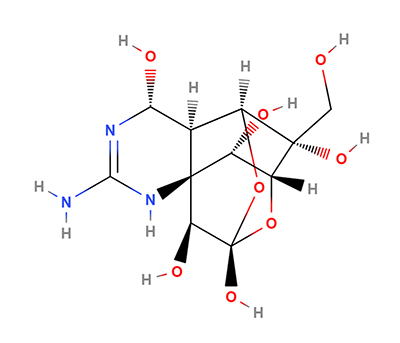
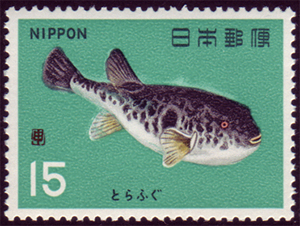
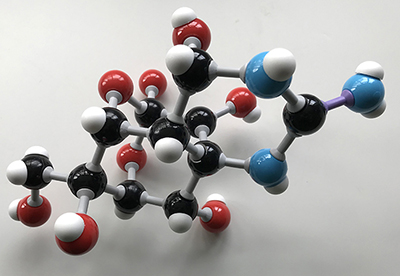
|
Micscape Lite article - contributors sharing their other interests. by David Walker, UK |
As shared in earlier Micscape Lite articles I enjoy making physical molecular models of molecules in the news, those with intrinsic beauty like DNA / carbon nanotubes / fullerenes or with a sociological interest like absinthe. Most recently in November 2022, 'Dastardly Dinoflagellates - maitotoxin and palytoxin, two of the deadliest toxins'.
Very complex relatively low molecular weight molecules are of particular interest especially Nature's 'nasties'—the many poisons in both animals and plants that if ingested will give humans a rather bad day—if in fact they live to see the next! I've already shared an article that illustrates strychnine, a few more are shared below. Mother Nature has evolved a very impressive chemistry set and many of these molecules defy the most up to date techniques of modern organic chemistry to synthesise with either the same elegance or if at all for some molecules.
As remarked in previous articles, many molecules can be downloaded in seconds from databases and viewed as both 2D and 3D models from all angles. But by building a physical model you can really get to know a molecule and the strains in rings or preferred conformations are tactile during the build. The models are complemented by philately items on the same theme.
The toxins below each have fascinating aspects to their social history, chemistry and biochemistry. Rather than paraphrase these, the interested reader can follow the links to each Wikipedia entry supplemented by John Mann's 'Murder, Magic and Medicine' (pub. OUP, 1994, paperback) who presents an excellent discussion of the chemistry, history and sociological aspects of each molecule.
Puffer fish, tetrodotoxin - choose your chef very carefully!
The puffer fish or fugu is a delicacy to eat in Japan but only heavily regulated chefs are allowed to prepare it as they need to remove the parts of the fish containing the deadly tetrodotoxin.



Tree frog, batrachotoxin - cute but pack a punch!
A wide range of attractive tree frogs have had the misfortune to be exploited for the poisons which they can exude. Extraction methods are not pleasant. One of the most potent toxins batrachotoxin is extracted from Phyllobates terribilis the golden poison frog shown top left on the stamp pane below. The Wikipedia entry notes that 'this frog is likely the most poisonous animal on the planet'.
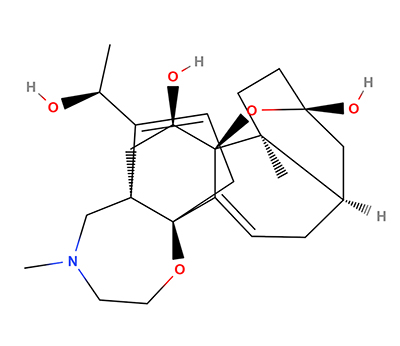
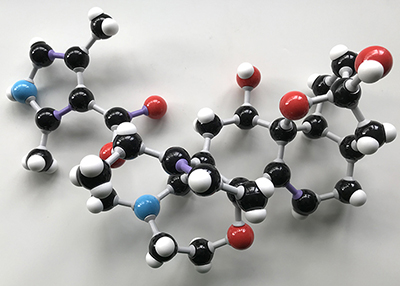
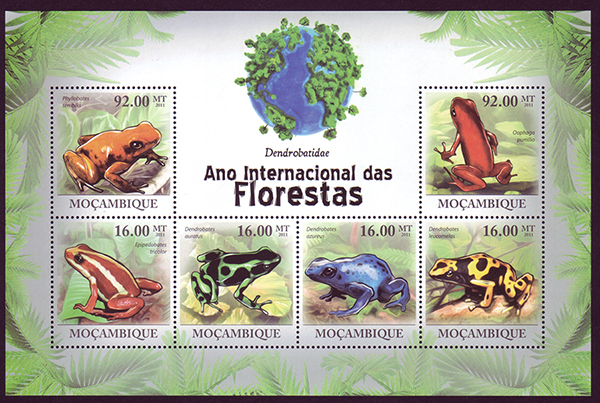
Curare, toxiferine - curators of ethnic weapons beware!
Curare is a generic name for the poisons which some indigenous tribes used to tip their arrows. These are plant toxins and one of the most potent is extracted from Strychnos toxifera which contains toxiferine. Arrows that end up in museums need to be treated with care by the curators in case there is some residual toxicity.
No stamp showing aspects of curare have been seen to date so the plate is from Franz Eugen Köhler, Köhler's Medizinal-Pflanzen pub. 1879 (sourced from the citation and same plate used in the Wikipedia entry). This image was taken directly from the book on the archive.org site.
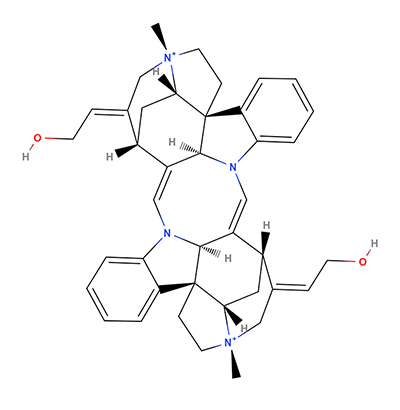
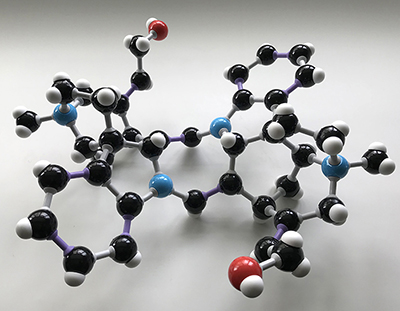

Monkshood, aconitine - not recommended for an alternative salad!
It is trendy nowadays to add less established parts of plants from the garden to a salad. But one to avoid is monkshood (known by other names such as aconite and wolf's-bane). The roots in particular contain the toxin aconitine.
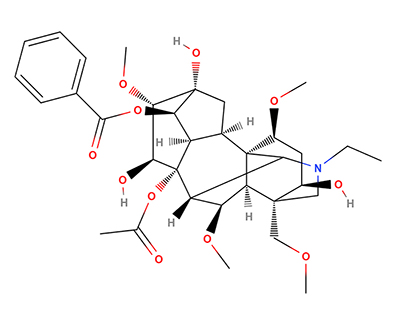

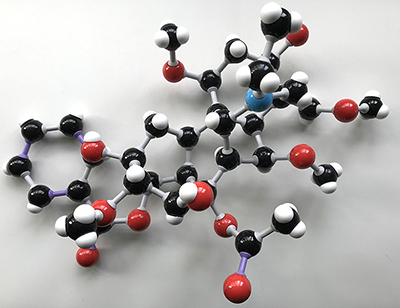
Comments to the author David Walker are welcomed.
Acknowledgements.
The skeletal models are courtesy of the freeware Molview at molview.org where all the above molecules are pre-built from accessing online databases but also allows molecules to built.
Models made with the Molymod system www.molymod.com. I prefer this system for small complex molecules but the design is less able to cope with four membered rings if use the shorter stiff bonds as here.
Published in the April 2023 edition of Micscape.
Please report any Web problems or offer general comments to the Micscape Editor .
Micscape is the on-line monthly magazine of the Microscopy UK web site at Microscopy-UK
© Onview.net Ltd, Microscopy-UK, and all contributors 1995
onwards. All rights reserved.
Main site is
at www.microscopy-uk.org.uk
with full mirror
at www.microscopy-uk.net
.